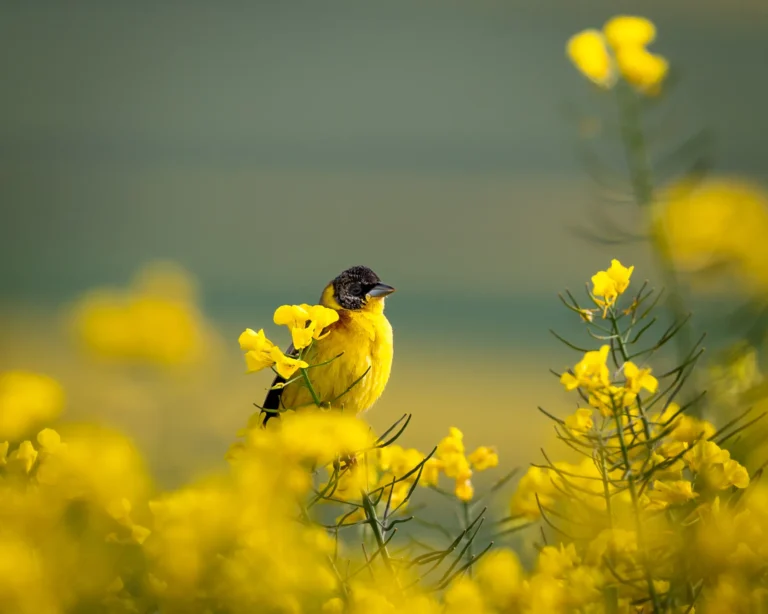
Black-headed bunting

Description and how to observe Black-headed bunting:
The Black-headed bunting, known scientifically as Emberiza melanocephala, is a distinctive-looking bird that can be seen in the lower reaches of the Danube Delta. Males have a vibrant plumage in the breeding season, with a deep black head and bright yellow breast, contrasting nicely with the brownish wings. Females and juveniles are less brightly coloured, but retain a similar pattern. The best time to observe these birds is spring and summer, when they are active and more visible, singing their melodious trills. They favour lowland habitats and woodland edges, where they can often be seen foraging for food or building nests in low vegetation.
What it feeds on Black-headed bunting:
The Black-headed bunting feeds mainly on seeds, insects and other small invertebrates.
Threats:
The main threats to the Black-headed bunting are:
- Habitat destruction: Wetland drainage, agricultural expansion and urbanisation are the main causes of habitat loss.
- Use of pesticides: The use of pesticides in agriculture adversely affects both the bird's food supply and its health.
- Climate change: Climate change can affect the distribution and abundance of insects, which are an important part of the black-headed blackbird's diet.
Ecological role:
More information about Emberiza melanocephala:
- Areal: The Black-headed bunting is widespread in Europe, Asia and Africa.
- Conservation: The species is protected under various national and international laws, but populations are declining in many areas.
- How you can help: You can help conserve the black-headed goat by supporting conservation organisations and reducing environmental impact.
Discover now the most beautiful places in the Danube Delta!
In the following pages, you will find detailed information about:
- Top tourist destinations: Traditional villages, nature reserves, tourist trails and much more.
- Activities and attractions: Everything you need to know about boating, fishing, bird watching, cycling and other activities.
- Accommodation and catering: Accommodation to suit all budgets and restaurants serving traditional cuisine.




